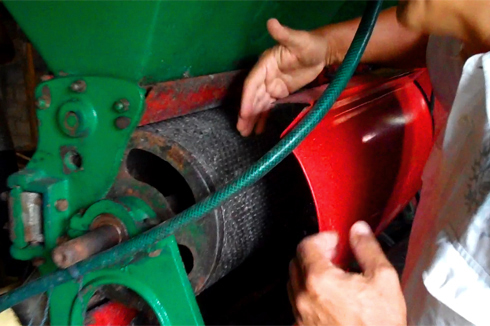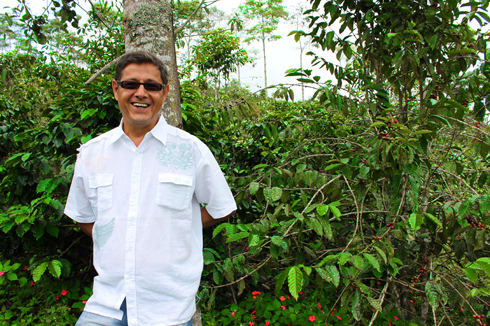Meet Omar Arango of Finca San Luis (VIDEO)
Posted by Gimme! Coffee on 07/18/2013
Gimme! Coffee: Finca San Luis & The New Mill Project from Calm Dog Productions on Vimeo.
In 2012, Omar Arango rebuilt his mill at Finca San Luis with the help of Gimme! Coffee and our generous customers. For every bag of Finca San Luis coffee sold, we sent an extra $2 directly to Omar to help with the New Mill Project -- in addition to the premium prices we already pay him for his delicious coffee. This was a major step for Omar and his farm, and we appreciate your help in making it happen!

About Milling Coffee
Coffee grows inside cherries; in other words, each coffee bean grows like a pit in the center of a sweet, pulpy fruit that is about the same size and shape as a regular cherry. Soon after harvesting, the pulp must be stripped off the coffee bean, and the bean must be dried thoroughly. The mill -- also called a beneficio -- is where this happens. If there are any delays, the pulp may begin to ferment, creating off-flavors in the bean and reducing the quality of the coffee. The most best farms (including Finca San Luis) have their own mills on-site, so that they can process the coffee cherries promptly after harvest.
At Finca San Luis, prompt milling is especially important because of the rainy, humid micro-climate. At most farms, harvest happens only 1-2 weeks out of the year; at Finca San Luis, Omar harvests year-round, sending out pickers every day for weeks at a time. In addition, the high humidity means that the coffee needs to be run through a mechanical drier in addition to a drying period on raised beds. Currently, beans have to be packed and transported to an off-site facility with a mechanical drier.
The advantage of this microclimate is that it allows Omar to pick selectively, track individual microlots, and maintain the highest quality in every batch. However, there's a disadvantage, too: because Omar is harvesting constantly, he has to keep more people on staff and he wears through his equipment much faster. These things drive up his cost of production and make his farm far less efficient.
All these factors -- the weekly harvests, the rainy microclimate, Omar's drive to produce the best Organic coffee in Colombia -- mean that the farm's mill needed some extra TLC. Omar's New Mill Project replaced and rebuilt all the components of his mill. With funding help from Gimme! Coffee and Virmax Cafe (our parter exporter), Omar...
- replaced the depulper, a machine that removes the outer layer of cherry pulp from the coffee bean. Dull teeth can break the bean, exposing it to a variety of defects. The new depulper will ensure the physical integrity of the beans.
- fixed broken drying beds. Omar uses these drying beds to track individual micro-lots of coffee.
- build new fermentation tanks and improve the layout of the mill. Improvements will include a new augur to transport beans between the top and bottom floors, and other fixes that will speed processing time and reduce labor.
- purchased a new mechanical drier. This machine will allow Omar and his crew to do their work more efficiently, cutting out the lag time of transport and the manpower for packing and travel.
The New Mill Project gave Omar a more efficient mill that can handle his frequent harvests, increase his yield, and make his farm more sustainable over the long term.

About Finca San Luis
We've been working closely with Omar Arango and Finca San Luis for years. Back in 2009, our then-Director of Coffee met Omar, toured the farm, and began a trading partnership we're continuing to build together. Omar grows a handful of different varietals, and He treats all varietals with the same careful picking, washing and drying practices and keeps them separate for individual quality assessment. In the three years since working together Omar's farm has renewed its Organic certificate, received price premiums for his micro-lots, and won two Good Food Awards.

